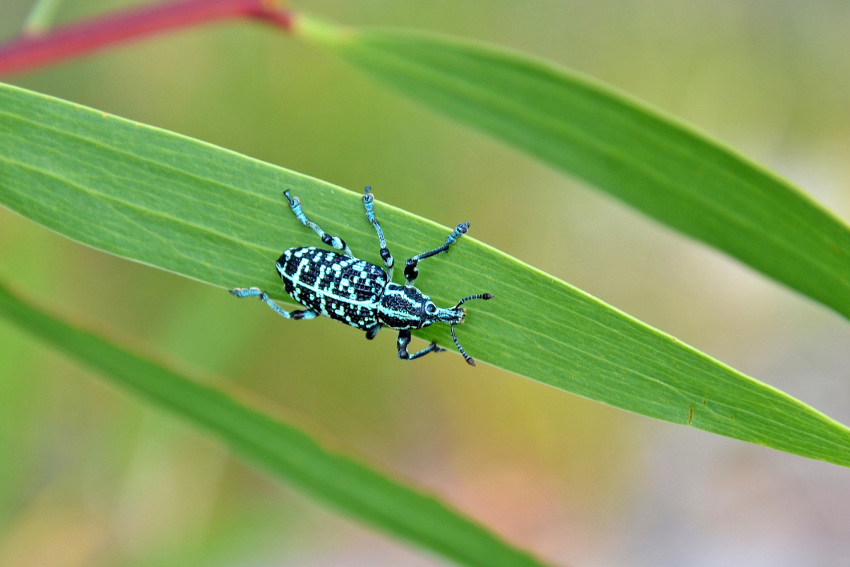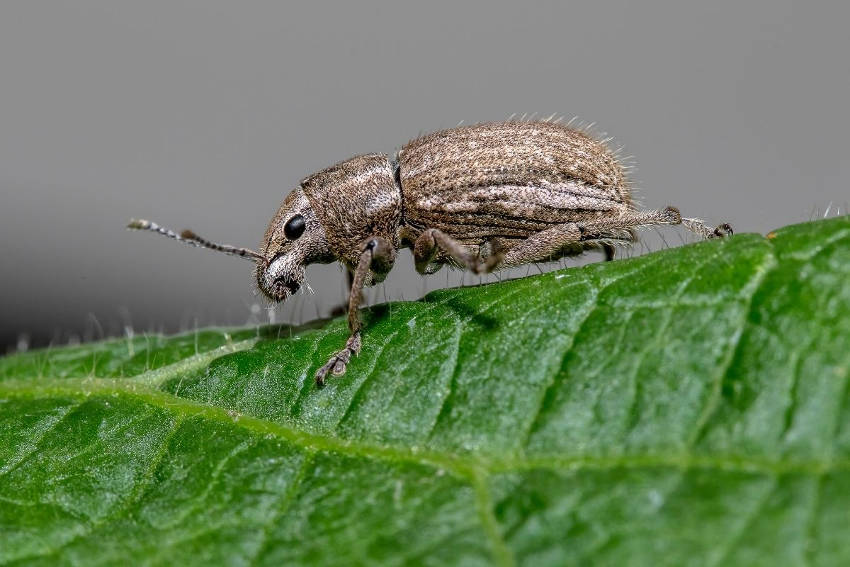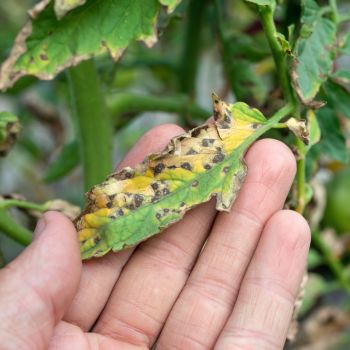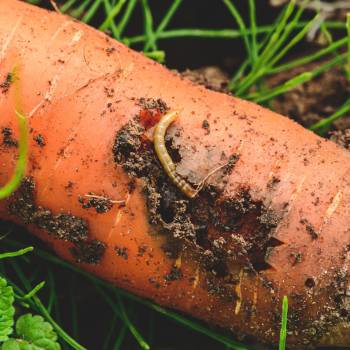The weevil forms a broad group of beetles, with around 6,000 species found in Australia alone. But for vegetable and fruit growers, there's one main family member which needs to be guarded against.
The garden weevil, or Phlyctinus callosus, can cause serious damage to many of the crops typically grown in home veggie patches, and every gardener should be alert to its presence. Here's what you need to know about this hungry bug.
Recognising the Garden Weevil
The garden weevil, also known as the banded fruit weevil or the vine snout weevil, was introduced accidentally to Australia from South Africa and has since become a serious agricultural pest.
These beetles are straightforwardly recognisable with a hard, mottled grey, oval-shaped body about 7mm in length. The head at the front end has a distinctive downward-facing snout, two short and segmented antennae, and a pair of relatively large compound eyes.
The body has six legs in total, with one pair near the head and two at the rear, and although the weevil has a pair of wing cases, they're fused shut and the insect is flightless.
One excellent way to identify the garden weevil is from the behaviour of the adult when it's threatened. At the first sign of trouble, weevils will drop to the ground, tightly fold away their various appendages, and play dead.
Not to Be Confused With...
Although garden weevils are mostly unwanted guests in your garden, there's no need to worry if you spot the impressive-looking Botany Bay diamond weevil. You're unlikely to confuse the two species, with the diamond weevil's distinctive blue colouring and larger size marking it out immediately.
Unlike the introduced garden weevil, the Botany Bay diamond is an Australian native and feeds solely on native trees and roots, posing no threat to typical veggie patch crops.
Which Plants Do Weevils Attack?
Weevils can attack all kinds of edible and non-edible plants, but they have a few particular favourites:
- Fruit trees including apples, pears, cherries, and plums.
- Brassicas including broccoli and cabbage.
- Root vegetables, particularly potatoes, carrots, and parsnips.
But weevils will happily munch on grasses, succulents, and many weeds. In short, weevils aren't by any stretch of the imagination fussy eaters.
Signs of Weevil Damage
The damage weevils cause can be seen both above and below ground. If they feed on the roots, plants will show unexplained wilting, an overall lack of vigour, and even death in juveniles with underdeveloped root systems.
Above ground, the bugs will chew uneven round holes in leaves, flowers, and fruit, usually working in from the edges. In extreme cases, young fruit trees can be defoliated completely, with predictably unhealthy results.
Young tree branches or the stems of smaller plants can be 'ringbarked', which usually halts growth on that entire section of a plant. On a smaller scale, bunches of fruit can sometimes be chewed away by the stem, or the fruit left scarred and covered in lesions.
Weevils feed by night and hide from predators during the day. Favourite hiding places include within leaf litter, under organic debris, behind loose bark, and inside curled-up leaves.
The Weevil Life Cycle
The garden weevil usually completes a single generation each year, with numbers peaking in spring and summer, but under ideal conditions it can sometimes produce a second batch of young.
The adult females lay eggs in clutches of 20 or so at a time, usually in leaf litter or other organic debris, and either down at the soil level or just above. The eggs themselves are oval and around a millimetre across. They're easier to see when freshly laid as they're a creamish-white, but soon turn darker and eventually black, making them all but invisible.
Hatching takes between one and two weeks on average, after which the larvae burrow down into the soil. If you happen to spot the larvae at this stage, they're whitish-grey grubs around 6mm long, wrinkled, and with chewing mouth parts at the front end.
The larvae go through a prolonged sequence of development, shedding their skins up to eleven times as they grow. After the final moult, they create a pupal chamber underground, where they spend one to three weeks before emerging as adults in mid to late October.
Weevil Prevention & Control
Unlike aphids, for example, weevils aren't ferociously prolific breeders, but considering the damage they can do it's still important to catch any problem early. There are several methods which can control weevil numbers, which are especially effective in combination.
- Grow 'trap crops' such as dandelion, marshmallow, sorrel, and portulaca. The weevils often prefer these weeds to your vegetables, and so they can make effective decoys. However, be sure to inspect the traps frequently and deal with any weevils you find, or you'll simply be making life easy for the pests and will be rewarded with large numbers of eggs.
- Space your plants well apart to maximise airflow, reducing the moist, warm, and secluded conditions which weevils love.
- Also space fruit plants and trees far enough apart to prevent the flightless weevils from spreading directly from branch to branch.
- Tidy up your vegetable beds to remove bark, leaves, and other debris which provide daytime cover and egg-laying grounds.
- Use a clean, new sugar cane mulch instead of garden cuttings and so on, as it's less attractive to weevils.
- Encouraging birds and frogs into your garden can be hugely beneficial, as both are excellent predators of weevils at every stage of the insect's life cycle.
- If you keep chooks, and can trust them to leave your veggies alone, then they can make short work of weevils if they're left to roam around your garden.
- Fix sticky traps around fruit tree trunks, vegetable stems, and container rims to stop flightless pests of all kinds climbing up to feed.
- Keep your veggie patch's soil surface turned over regularly, to expose eggs and larvae to birds and other predators.
- As a last resort, an organic insecticide can be a quick and effective solution, although bear in mind most chemical controls will harm beneficial insects too.
Many gardeners never see a serious problem with weevils, even if there's a population resident in their gardens. But once numbers start climbing and the damage becomes visible, these measures will help keep the problem in check from season to season.

_850.jpg)
_850.jpg)
_850.jpg)






